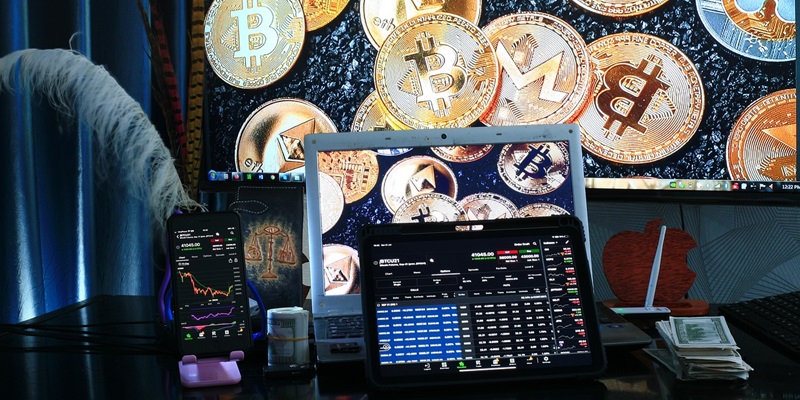The cryptocurrency market has always been a hotbed of innovation, speculation, and rapid changes, and this dynamism is most evident in the recent activities surrounding meme coins. These coins, often created as a joke or parody, have evolved into significant players, influencing market movements and attracting a myriad of investors. The Solana (SOL) network, one of the most promising blockchain ecosystems, has experienced notable effects due to the trading of meme coins, particularly Dogwifhat (WIF). Amid a broader cryptocurrency market recovery led by Bitcoin (BTC), WIF has shown signs of a potential bullish reversal, despite facing a bearish trend since March 2024.
The Resurgence of Dogwifhat (WIF)
Market Capitalization and Trading Volume
Dogwifhat (WIF) has emerged as the most prominent meme coin on the Solana network in terms of market capitalization and daily trading volume. With a fully diluted valuation of $1.63 billion and an average daily trading volume of $440 million, WIF has surged over 10 percent in a week but remains below critical Moving Averages, indicating bear dominance. These metrics suggest cautious optimism among traders and investors, who are increasingly confident about the coin’s short-term prospects. However, despite these gains, the sustained bearish trend that has marked WIF’s performance since March 2024 cannot be ignored. This trend is characterized by lower lows and highs, a typical indicator of a prevailing bear market.
The on-chain data offers intriguing insights into WIF’s trading dynamics. Notably, WIF’s largest whale investor has been actively accumulating more tokens, bolstering prospects for the coin. Whale activity is often considered a strong indicator of potential price movements, as large investors typically have more information and resources to make informed decisions. This accumulation behavior suggests that these large investors see substantial long-term value in WIF despite the current bearish trend. Their confidence might inspire smaller investors to hold onto their positions or even increase their stakes, creating a more robust support level for the coin.
Prospective Trends and Market Sentiments
The broader altcoin market appears poised for a potential rally, influenced by Bitcoin’s performance and technical indicators. Bitcoin dominance, a key market sentiment gauge, may reverse due to technical factors such as a rising wedge pattern and bearish divergence in its Relative Strength Index (RSI). These indicators often suggest a potential decline in Bitcoin’s dominance, which could favor altcoins like WIF. As Bitcoin’s grip on the market possibly loosens, funds might flow into altcoins, driving up their value and stimulating increased trading activity.
The speculation surrounding meme coins like WIF is not merely about short-term gains but also reflects a broader strategic shift within the crypto landscape. Meme coins are gaining traction for their speculative appeal, drawing new users to the web3 space and expanding the cryptocurrency community. This trend is further complemented by notable whale activity, indicating a belief in WIF’s long-term value. While the allure of quick profits can be tempting, it’s essential for investors to remain mindful of inherent risks and market uncertainties. The speculative nature of meme coins means that their prices can be highly volatile, influenced by market sentiment, social media trends, and other unpredictable factors.
Broader Implications for Solana and the Crypto Market
Solana Ecosystem and ETF Approval
The Solana ecosystem, with its fast transaction speeds and lower fees, continues to attract a growing number of users and developers. This trend is set to accelerate following the approval of two spot SOL exchange-traded funds (ETFs) in Brazil. These ETFs will likely bring more attention and investment to the Solana network, boosting its credibility and robustness. The approval of SOL ETFs marks a significant milestone, as it implies a gradual mainstream acceptance of Solana as a viable blockchain platform for various applications, beyond just trading meme coins.
The implication of these ETFs for meme coins like WIF could be substantial. As more institutional and retail investors gain exposure to Solana through these ETFs, their interest might spill over into other assets within the ecosystem, including meme coins. This increased exposure could lead to higher liquidity and more stable trading conditions for meme coins, potentially reducing some of the volatile swings typically associated with them. Moreover, the approval of these ETFs signals a growing recognition of the Solana network’s potential, which could further enhance investor confidence across all assets on the platform.
Strategic Shifts and Long-term Prospects
The cryptocurrency market remains a dynamic landscape full of innovation, speculation, and rapid changes. This is especially evident in the recent activity surrounding meme coins. Initially created as jokes or parodies, these coins have evolved into significant market players, influencing trends and drawing various investors. The Solana (SOL) network, one of the most promising blockchain ecosystems, has felt the impact of meme coin trading, particularly concerning Dogwifhat (WIF). As the broader cryptocurrency market shows signs of recovery spearheaded by Bitcoin (BTC), WIF is displaying signs of a potential bullish reversal. This is noteworthy given that the coin has been in a bearish trend since March 2024. The meme coin phenomenon is reshaping market behavior, challenging traditional investment strategies, and showcasing how even assets born from humor can become influencers in the financial world. The ongoing recovery in the broader market, led by Bitcoin, provides a backdrop against which these meme coins might gain further ground, highlighting their growing importance and influence within the cryptocurrency landscape.

